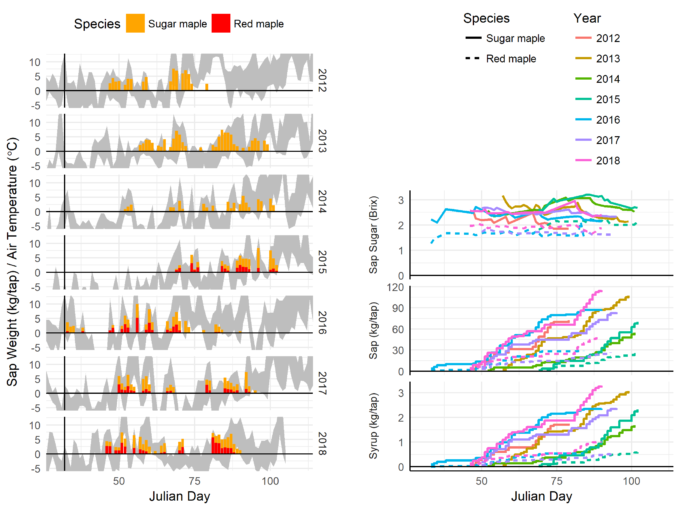Mid-April and it snowed 2 inches last night. We’ve had consistently freezing nights and warmish days for last 2 weeks, but I pulled the taps a week ago and there hasn’t been much sap flow since the last week of March. That’s pretty typical among other tappers I’ve talked too, and who are writing about the season . The timing for ending the season is about right – we typically have our last flows the last week of March or the first week of April; it just seems strange to pull the taps with snow still on the ground. And while the sap is still flowing in the trees, as I’m sure it is. It’s just not coming out of the tap holes anymore because the microbial populations that began growing in the tap holes on warm days in February and March grew big enough to clog the trees’ vessels leading into the tap holes. If one wanted to drill another tap into a tree now they could still collect sap; but another wound in an already tapped maple would probably not be worth it at this time of the year. The sap sugar content was trending down the last week of March and the sap was yellowing. And this sugar maker was ready for a break after a season that started in earnest in the middle of February and was pretty consistent until the end of March except for a 10 day period in mid-March when is was too cold for sap flow. In all, we collected sap on 26 days, which is the second most (behind 2013) in the 7 years I’ve collected sap at Harvard Forest. Average sap sugar content was 2.5, about average and the same as last year. What really stood out as exceptional was that the amount of sap per collection – 3.9 liters – beat the average by more than half a liter. That led to 2018 setting the pace in terms of both total sap collected and the total amount of syrup that could be produced from that sap on a per tap basis.
And to think of what might have been if the taps had kept flowing…
